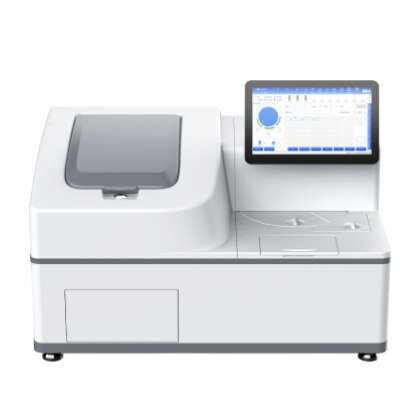Neural Cells Repair Spinal Cord Damage without Triggering Rejection
By LabMedica International staff writers
Posted on 24 May 2018
Stem cell researchers working with a porcine model have demonstrated the potential for using neural precursor cells (NPCs) – derived from induced pluripotent stem cells (iPSCs) that had once been skin cells – to repair damage to the spinal cord.Posted on 24 May 2018
Use of neural stem cells derived from genetically different donors to replace damaged or destroyed tissues, such as in a spinal cord injury, has been hampered by persistent rejection of the grafted cells, necessitating the use of complex drugs and techniques to suppress the host’s immune response.

Image: A population of induced pluripotent stem cell-derived neurons in an allogenic, previously injured spinal cord of a pig at three-and-a-half months (Photo courtesy of the University of California, San Diego).
In experiments designed to get around the immune response, investigators at the University of California, San Diego (USA) grafted NPCs into the spinal cords of syngeneic non-injured pigs with no immunosuppression and into allogeneic (genetically dissimilar pigs) with chronic spinal cord injuries, followed by a transient four-week regimen of immunosuppression drugs.
They reported in the May 9, 2018, online edition of the journal Science Translational Medicine that syngeneic porcine iPSC-derived neural precursor cell transplantation to the spinal cord in the absence of immunosuppression was associated with long-term survival and neuronal and glial differentiation. No tumor formation was noted. Similar cell engraftment and differentiation were shown in spinally injured transiently immunosuppressed swine leukocyte antigen (SLA)–mismatched allogeneic pigs.
These findings demonstrated that iPSC-NPCs could be grafted into syngeneic recipients in the absence of immunosuppression and that temporary immunosuppression was sufficient to induce long-term immune tolerance after NPC engraftment into spinally injured allogeneic recipients. Thus, it was shown that iPSC-NPCs represented an alternative source of transplantable NPCs for the treatment of a variety of disorders affecting the spinal cord, including trauma, ischemia, or amyotrophic lateral sclerosis.
“The promise of iPSCs is huge, but so too have been the challenges. In this study, we have demonstrated an alternate approach,” said senior author Dr. Martin Marsala, professor of anesthesiology at the University of California, San Diego. “We took skin cells from an adult pig, an animal species with strong similarities to humans in spinal cord and central nervous system anatomy and function, reprogrammed them back to stem cells, then induced them to become neural precursor cells (NPCs), destined to become nerve cells. Because they are syngeneic - genetically identical with the cell-graft recipient pig - they are immunologically compatible. They grow and differentiate with no immunosuppression required.”
“Our current experiments are focusing on generation and testing of clinical grade human iPSCs, which is the ultimate source of cells to be used in future clinical trials for treatment of spinal cord and central nervous system injuries in a syngeneic or allogeneic setting,” said Dr. Marsala. “Because long-term post-grafting periods - one to two years - are required to achieve a full grafted cells-induced treatment effect, the elimination of immunosuppressive treatment will substantially increase our chances in achieving more robust functional improvement in spinal trauma patients receiving iPSC-derived NPCs.”
Related Links:
University of California, San Diego













